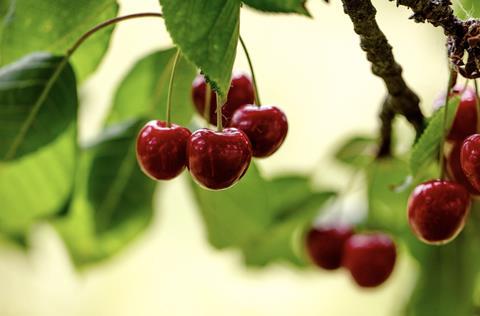Turkish exporters anticipate a good cherry season despite an untimely bout of frost across various stonefruit regions, which has hit apricot and cherry production in some areas

The main image that tends to be used when illustrating climate change is one of cracked, drought-affected land, or else a wildly burning forest or polar bear stranded on melting ice – all understandably arresting pictures of a warming planet.
Less common is the image of the sudden cold snap or early spring frost, an increasingly frequent occurrence, with the power to decimate delicate crops like cherries and other stonefruit before they’ve even begun to bear fruit.
A significant advantage that a major producer like Turkey has is the geographic diversity of its stonefruit cultivation, so if one or more areas are affected by a drop in temperatures, other regions may well fare better.
Apricots suffered during the autumn in Turkey, particularly in the important Malatya area. “Malatya is well known for the Turkish specialty Sugar Apricots, but frost affected this whole area,” says Yigit Gökyigit of Turkish producer-exporter Alanar. “I believe volumes will be lower and prices will probably be higher than usual for Turkish apricots this year.”
Despite some tough conditions, Gökyigit has higher hopes for cherries. “We expect a good season this year in general for cherries,” he says. “The weather impacted some regions in a negative way. Çanakkale, Manisa and Izmir are slightly affected by the frost. I think up to 15 per cent of the crop might be lost in some parts of these regions.”

The first harvest of this season’s cherries is expected in the last days of April, he says, starting with early varieties destined for the domestic market.
“Turkish export varieties such as Z-900 will commence in late May,” he continues, “meaning that the first Turkish cherries will be arriving on European supermarket shelves in the first days of June.
“Even though some volumes have been lost to the weather in some regions, I think we will have a great season here in general. The main growing area for Turkish cherries is Afyon, and the weather has been very good there so far. Also, some other major cherry regions like Konya and Isparta are expected to have a fruitful cherry season.”
Germany remains the main market for Turkish cherries, followed by Russia, the Netherlands and the UK. “We also export to countries in Asia-Pacific and the Middle East,” says Gökyigit. “There may be opportunities on the Canadian market for Turkish cherry exporters this year due to the high tariffs between Canada and the US. The US is the main cherry supplier to Canada, so I believe Turkey may be able to capture some portion of the Canadian market vacated by US cherries.”
In addition to the climate, labour availability and increasing costs have also been key challenges for Turkish exporters over the past couple of years, and regrettably that’s unlikely to change any time soon. “Based on high inflation and interest rates, our costs are increasing dramatically every year,” says Gökyigit. “As a result, our profit margins are tighter than previous years.”



